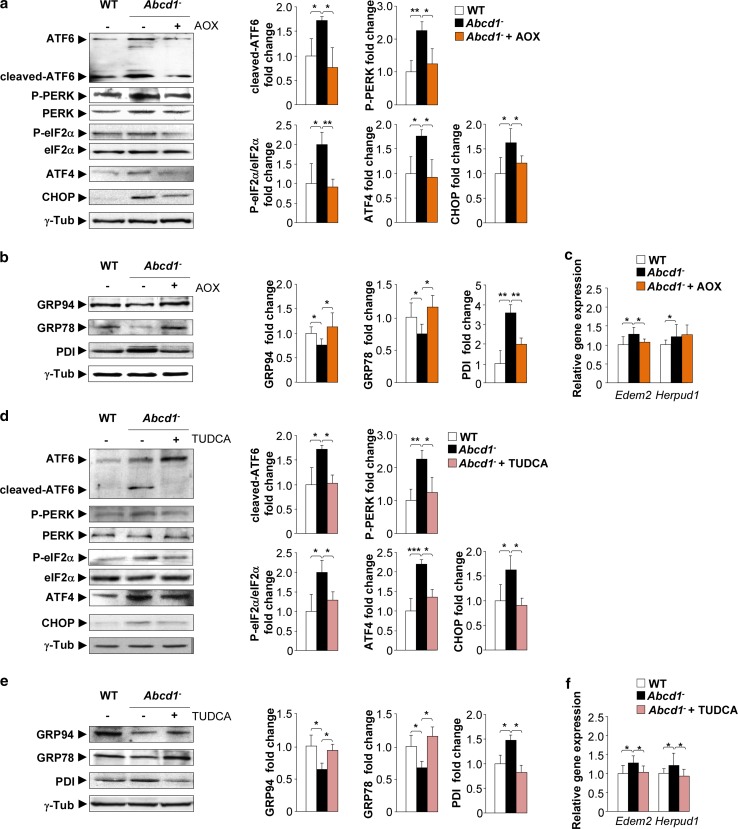Fig. 5.
Antioxidant and TUDCA treatments prevent UPR activation in the X-ALD mouse model. a, d Representative immunoblots for full-length ATF6, cleaved-ATF6, total PERK, P-PERK, total eIF2α, P-eIF2α, ATF4 and CHOP in the spinal cord tissue of WT mice (WT), Abcd1 − mice (Abcd1 −) and a antioxidant-treated (Abcd1 − + AOX) or d TUDCA-treated (Abcd1 − + TUDCA) Abcd1 − mice at 12 months of age. GRP78, GRP94 and PDI levels were analysed in the spinal cords of WT, Abcd1 − and Abcd1 − + AOX mice (b) and Abcd1 − + TUDCA mice (e) at 12 months of age. Real-time RT-PCR analyses of Edem2 and Herpud1 in the spinal cord tissue of WT mice (WT), Abcd1 − mice (Abcd1 −) and c antioxidant-treated (Abcd1 − + AOX) or f TUDCA-treated (Abcd1 − + TUDCA) Abcd1 − mice at 12 months of age. In (a, b and d, e), the histograms on the right show normalized UPR marker levels relative to those in untreated WT mice. All values are expressed as the mean ± SD (n = 10 by genotype and condition in a–d; **P < 0.01 and ***P < 0.001, one-way ANOVA followed by Tukey’s HSD post hoc test)

